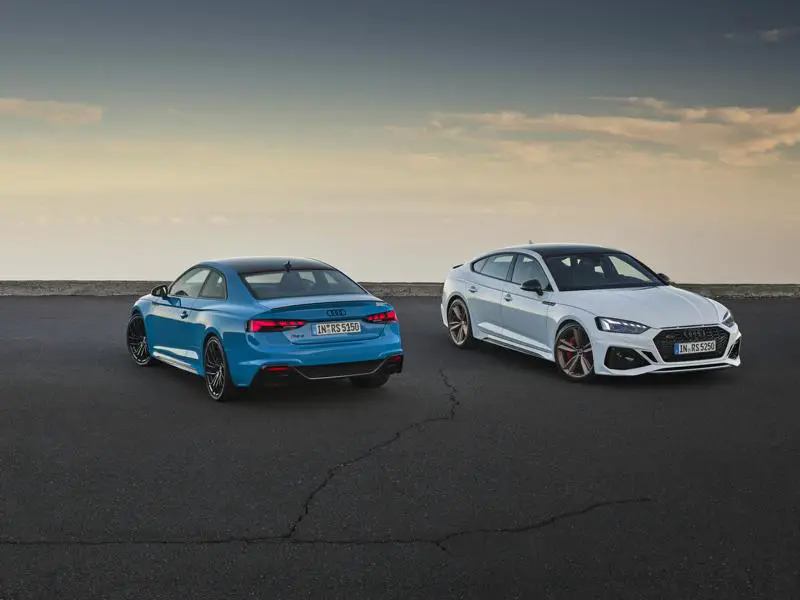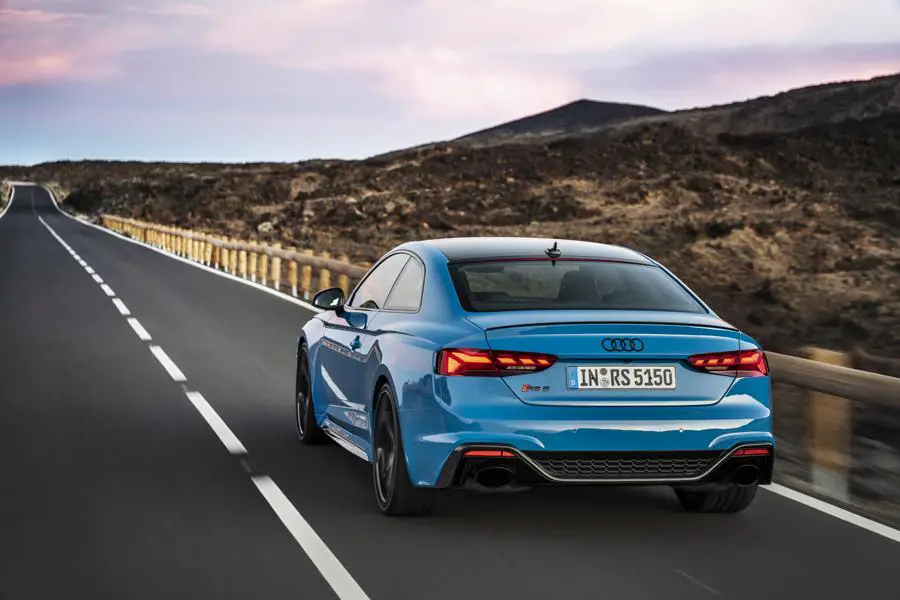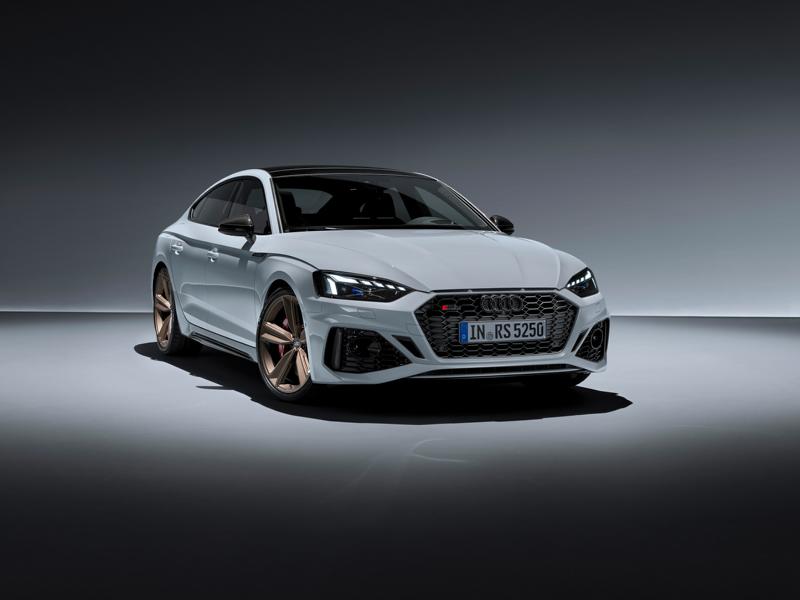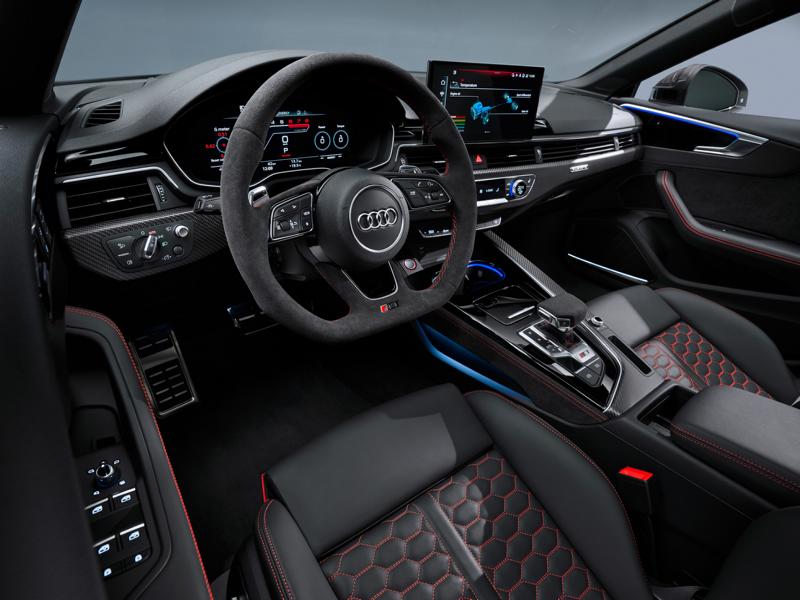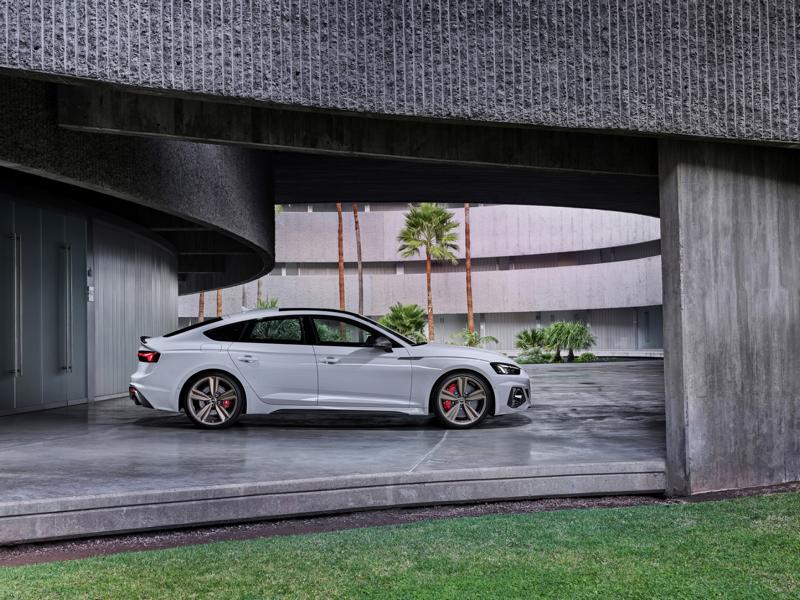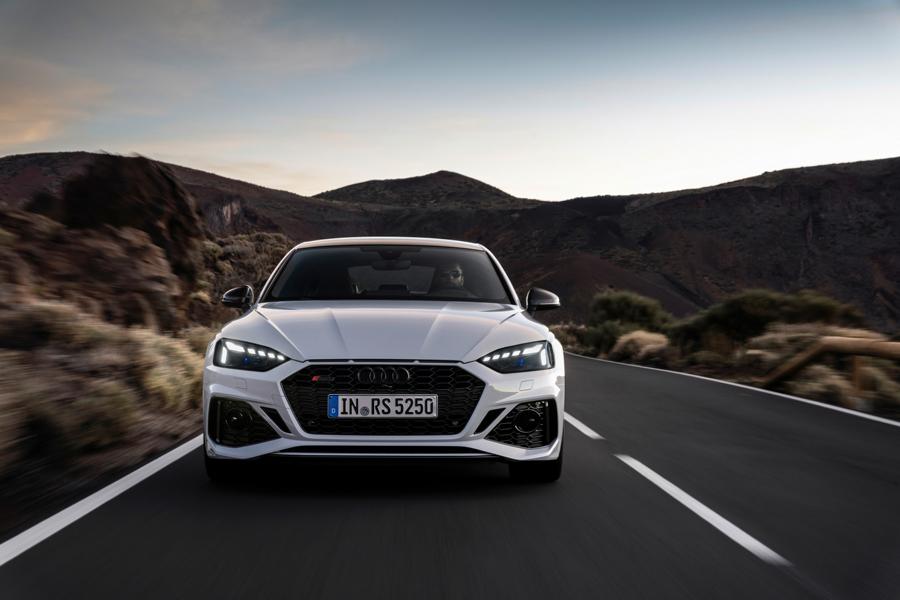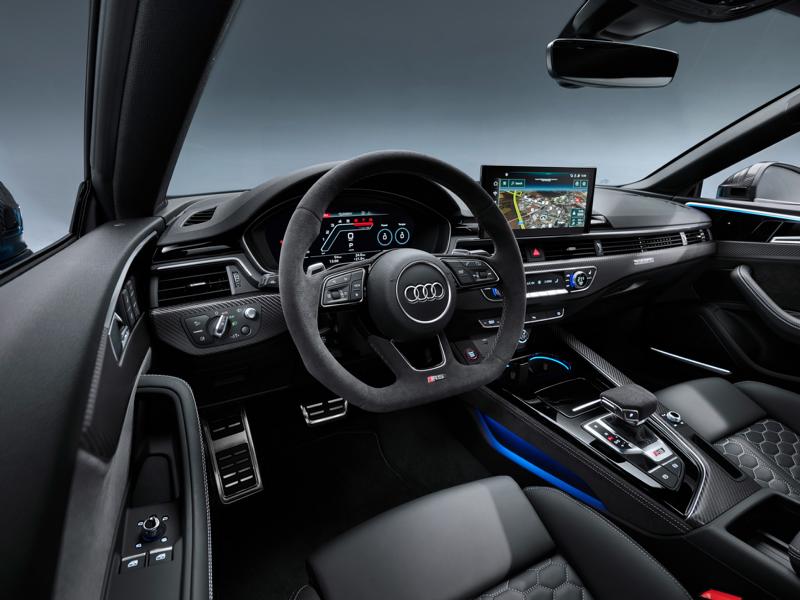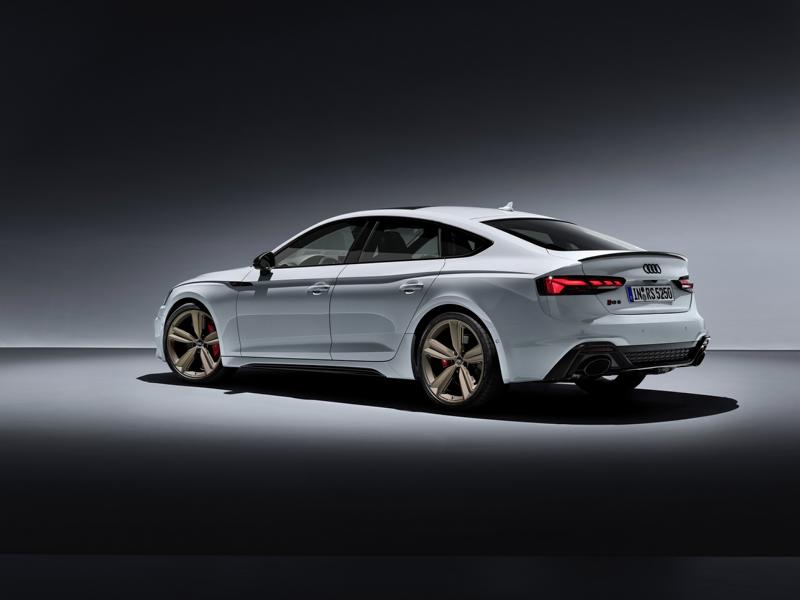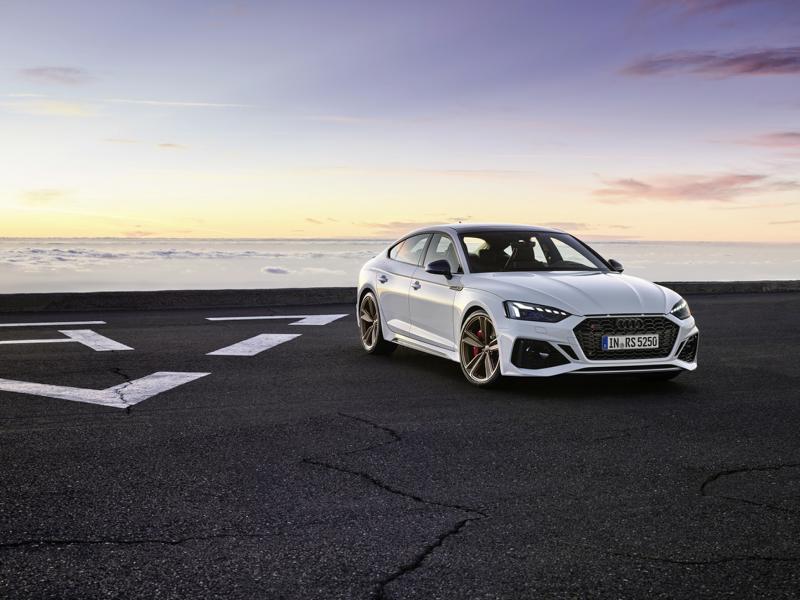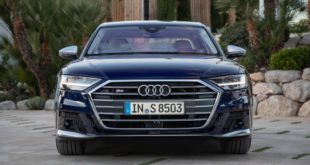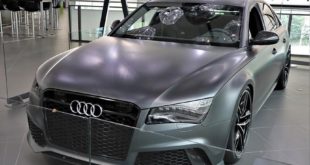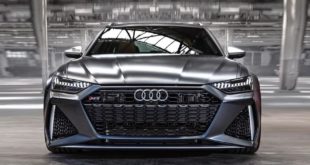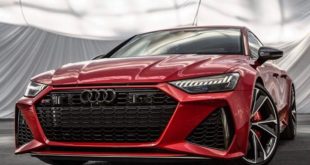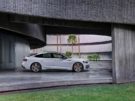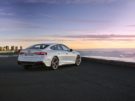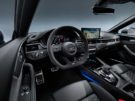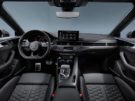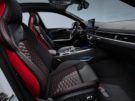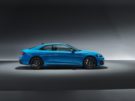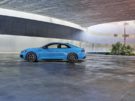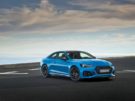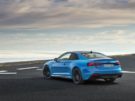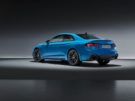The electrification offensive at Audi is in full swing. In the second half of 2019 alone, four new models with plug-in hybrid drives made their debut on the European market - they come from the Q5, A8, A6 and A7 Sportback series. The new Q7 TFSI e quattro continues this series. The plug-in hybrid SUV bears the “TFSI e” logo.
Two engines and quattro drive
Like every plug-in hybrid model, the Audi Q7 TFSI e quattro relies on the power of two hearts. One of the brand's most modern units, the 3.0 TFSI, serves as the internal combustion engine. The turbocharged, sophisticated V6 delivers 250 kW (340 hp) of power and 450 Nm of torque. It is certified according to the Euro 6d-TEMP emissions standard, and a gasoline particulate filter is standard. A permanently excited synchronous machine (PSM) works as an electric motor, which is characterized by a high power density and a compact design. The PSM with 94 kW peak output and 350 Nm is integrated in the housing of the eight-speed tiptronic. Together with the clutch that connects the combustion engine to the drive train, it forms the so-called hybrid module. The electricity for the e-machine comes from a liquid-cooled lithium-ion battery, which is placed under the luggage compartment floor and has an energy capacity of 308 kWh at a voltage of 17,3 volts. Its 168 prismatic cells are divided into 14 modules, which are on two levels one above the other. The battery cooling, which also includes the charger, forms its own low-temperature circuit. If required, it can be connected to the refrigerant circuit of the air conditioning system or connected to the second low-temperature circuit that supplies the electric machine and the power electronics. It converts the direct current of the high-voltage battery (HV) into three-phase current for the electric machine. When recuperating, the electric machine works as a generator and feeds direct current back into the lithium-ion battery.
In electrical operation, both Q7 variants, measured using the WLTP method, achieve the same ranges of up to 43 kilometers. In many countries and cities, their owners can take advantage of tax benefits or municipal transport privileges such as free parking or driving on the bus lane. In Germany, both plug-in hybrid models benefit from the company car regulation for electric cars: the vehicle is only taxed at a flat rate of 0,5 percent of the gross list price.
For maximum efficiency: the predictive operating strategy
Whether short or long distance, whether city, country road or highway - the hybrid management of the Audi Q7 TFSI e quattro automatically selects the optimal operating strategy for every journey. It is designed so that the driver can cover a large part of his daily journeys electrically. With the "EV" softkey in the lower of the two MMI displays, he can decide at any time whether and how he wants to intervene in the interaction of the two motors.
The SUV starts in the purely electric “EV” mode. To warn pedestrians and cyclists in city traffic, a loudspeaker in the right wheel arch emits a synthetic e-sound. This acoustic vehicle warning system (AVAS) can be clearly heard in accordance with EU guidelines up to 20 km / h and gradually fades out as the speed increases. The petrol engine only becomes active when the driver presses the right pedal - the "active accelerator pedal" - beyond a certain resistance.
The "Hybrid" mode has two operating modes: "Auto" and "Hold". In "Auto" mode, the predictive operating strategy is automatically activated when route guidance is started in the standard MMI navigation plus. The battery charge is intelligently distributed over the route, with high electrical shares in the city and in stop-and-go traffic. The TFSI engine usually takes care of the acceleration, and the E-machine supports it as required. When accelerating from low engine speeds, for example, it bridges the tenths of a second that the turbocharger needs to build up pressure, so that the drive responds very spontaneously. Basically, the predictive operating strategy tries to drive as far as possible electrically and to fully use the existing battery charge to the destination.
A different strategy applies in the "Hold" mode: Here the existing charge status of the battery is kept up to date with only minimal fluctuations. This takes place through the recovery of braking energy, i.e. recuperation and by shifting the load point - i.e. through targeted interventions in the management of the 3.0 TFSI. Thus, for example, after a conventionally driven long distance, the subsequent journey in urban areas can be done purely electrically, i.e. emission-free, and almost noiselessly.
The vehicle's operating strategy plans the management of the drives and uses a large amount of data - always with the aim of optimizing driving comfort and reducing energy consumption and CO2 emissions. In long-distance planning, it includes the length and profile of the route as well as online traffic information and the driver's driving style. In the short-term forecast, which runs in parallel, the standard "Predictive Efficiency Assistant" (PEA) system provides near-field information from the navigation data, such as speed limits, road types, inclines and descents. The data from the camera and radar, which monitor the traffic ahead, are also incorporated here.
Even more efficiency: freewheel and recuperation
The phases in which the driver takes his foot off the accelerator pedal are also important for the efficiency of the Q7 with plug-in hybrid drive. In such situations, regulation is carried out by the PEA. In addition to the navigation data, it takes into account the distance to the vehicle in front and thus decides between free running with TFSI ("sailing") switched off and recuperation - the recovery of kinetic energy and its conversion into electrical energy. The Q7 TFSI e quattro can recover up to 25 kW of power in thrust and return it to the lithium-ion battery.
When operated as a generator, the e-machine handles all light and medium braking up to 0,3 g, which is more than 90 percent of all deceleration processes in the customer's everyday life. The hydraulic wheel brakes are only added when there are major decelerations. Thanks to elaborate fine-tuning, the transition - “blending” - between electric and hydraulic braking is almost imperceptible, the brake pedal always provides good feedback and can therefore be precisely metered. When braking, the hybrid SUV achieves up to 80 kW of recuperation power.
If the optional adaptive cruise assist including radar cruise control is active, the PEA supports the driver not only when decelerating, but also when accelerating with less fuel. If it is switched off, the driver receives information as to when it is sensible to take his foot off the right pedal. He feels an impulse in the active accelerator pedal and sees displays in the Audi virtual cockpit (standard) and in the head-up display (option). Detailed symbols such as intersections, town signs or cars in front illustrate the reason for the speed reduction.
In the Audi virtual cockpit and on the display of the standard MMI touch response operating system, the driver can see a wealth of information about electric driving - power meter, range and the current energy flows of the two drive units. The power meter as the central display element provides, among other things, information on maximum electrical performance or on thrust or brake recuperation.
Up to seven driving characters: the Audi drive select system
In addition to the "EV" softkey, the driver of the Audi Q7 TFSI e quattro has a second level on which he can influence the driving character - the Audi drive select system. With the driving profiles "comfort", "efficiency", "auto", "dynamic", "individual", "allroad" (with the optional adaptive air suspension) and "offroad", he can influence the setup of the drive, air suspension and steering.
Depending on the setting, when the accelerator pedal is pressed, the way in which the drives work together also changes. In the "dynamic" profile from Audi drive select and in "S" mode of the transmission, the electric motor supports the 3.0 TFSI with a strong boost function for high dynamics and agility. With this setting, the freewheel is locked when the accelerator is released - the electric motor always recuperates as soon as the foot releases the right pedal.
Sporty character: the Q7 60 TFSI e quattro
The Audi Q7 60 TFSI e quattro has a system output of 335 kW (456 hp) and 700 Nm system torque. This sporty impression is reinforced by the standard S line exterior with full paintwork in body color and striking design details on the front and rear. The black optics package and the matrix LED headlights complete the look. Behind the 20-inch wheels are red brake calipers, the adaptive air suspension offers a wide range between tight handling and comfortable rolling.
Inside the Q7 60 TFSI e quattro comes the S line / S line sport package. Its scope includes sports seats with S line embossing, a black headlining and decorative inlays in aluminum. When the doors are opened, LED entry lights project the four rings onto the floor. Most of the equipment features are also available for the Audi Q7 55 TFSI e quattro on request.
Load comfortably on the way
The charging port of the new plug-in hybrid is located in the rear area of the left flank, opposite the tank neck. The Audi Q7 TFSI e can be conveniently charged on public columns using the standard Mode 3 cable with Type 2 plug. An in-house charging service, the e-tron Charging Service, provides access to more than 110.000 charging points in Europe on request. With a single card, customers can conveniently load from numerous providers.
Charge management from the couch: the myAudi app
With the myAudi app, customers can use the services from the Audi connect portfolio on their smartphone. He can query the battery and range status, start charging, program charging timers and view the charging and consumption statistics. The charging stations are listed both in the app and in the car's navigation system.
Another function of the myAudi app is pre-air conditioning before departure. The air conditioning compressor and the standard thermoelectric auxiliary heater in the car use electricity from the high-voltage battery or from the socket. The customer can determine how the interior should be heated or cooled while the SUV is parked or the battery is being charged. Depending on the equipment, he can also activate the steering wheel and seat heating as well as the seat ventilation via the pre-air conditioning - via the myAudi app or via the timer in the vehicle.
The Audi Q7 60 TFSI e quattro can now be ordered in Germany for a basic price of 89.500 euros, the Audi Q7 55 TFSI e quattro for a basic price of 74.800 euros. The market launch will start at the end of 2019.
(Photos: Audi)
Of course that had not been the case. Our tuning magazine has tens of thousands more tuning reports in stock. Do you want to see them all? Just click HERE and look around. Or are you especially interested in the manufacturer Audi? Then the following excerpt is for sure just the right thing.
|
2020 Audi RS7 Sportback - 600 PS u. Mild hybrid twin-turbo V8 |
Facelift 2020 Audi RS 5 Coupe and Sportback with 450 PS
"Tuningblog.eu" - we keep you up to date on the subject of car tuning and car styling with our tuning magazine and we present you the latest tuned vehicles from all over the world every day. It's best to subscribe to ours Feed and you will be automatically informed as soon as there is something new for this post and of course also to all other contributions.
 tuningblog.eu Your magazine about tuning the car
tuningblog.eu Your magazine about tuning the car
